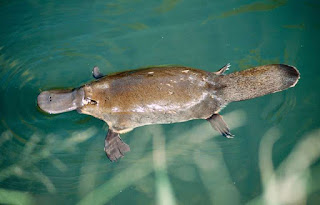Why Is the Platypus a Mammal?
When the 18th century Zoology George Shaw published the first scientific description of the plaatypus, many of his contemporaries did not believe that animals were real. Shaw himself initially believed the specimen became a trick consisting of part of the body from different animals, sewn together to create the resemblance of extraordinary creatures. With bills, webbed feet, and behavior such as eggs lay eggs and produce poisons that oppose other known mammals norms, it is not difficult to see how platypus avoids the recognition of European naturalists, who have just begun to observe and categorize unique fauna found in Australia. Reminiscent of the classic line of DC comics, scientists and observers find themselves asking: Is it a bird? Is this a plane? Maybe the transitional reptile species that display initial mammal physiology? Platypus, like Superman, nothing above.
Found in the new water and estuary of Australia, Platypus is a small hairy mammal with different bills and tails such as beavers. The platypus classification as mammals - the same animal group that includes dolphins, elephants and humans - are not always proven by itself. Most mammals give live birth to their children; Platypus lay eggs. Female mammals give milk to their young people through special nipples or dot; Platypus females do not have dot and instead "sweat" milk for their children. Platypus is also one of a few mammals to produce poisons.
One reason behind the physiological uniqueness of Platypus comes from his evolutionary history as monotreme. Monotrem is a group of five mammals who still lay eggs and have a very specialized part of the mouth. They formed a separate branch of evolution from the Marsupial (eg, Kangaroos, Koala, and Wombat) and placental mammals (the most common types of mammals, which cover everything from squirrels to whales. Despite sharing the same ancestors, monotrem was cut off from Other mammals were around 166 million years ago, earlier than when Marmsupial and placental mammals were established in the lineage of their own evolution. Because of this, monotrem like Platipus often display initial mammal features similar to reptile physiology and thus reflect all the origin of general evolution of mammals In reptiles. These features include lower platypus body temperature and dot shortages.
Although the relationship is closer to the reptile ancestors, many of the most interesting features of the platypus evolved independently. Although many have made the relationship between poison platypus and venomous reptiles, poisons found in the plaatypus are actually examples of convergent evolution, where species develop its own properties as a means to adapt. Early naturalist compares plaatypus bills with duck; However, although it is similar in basic morphology, specialist bills and many softer than the platypus does not come from genetic relationships with birds. The Platypus bill is an extraordinary organ by itself: it is filled with electroreseptors that allow the platypus to navigate underwater without vision.
Although unique and rather strange, Platypus is undoubtedly mammals who have made scientists fascinated since their initial identification. It is a common saying that Platypus is the result of a particular taste of the creator of omatology, developing parts of random animals to create organisms to intentionally bamboo. But in reality, the existence of the platypus (once we can forget the initial shock see one) has proven itself more than just a coarse joke, offering us extraordinary and valuable insights into the history of mammals and the evolutionary nature of the evolutionary process itself.




Comments
Post a Comment